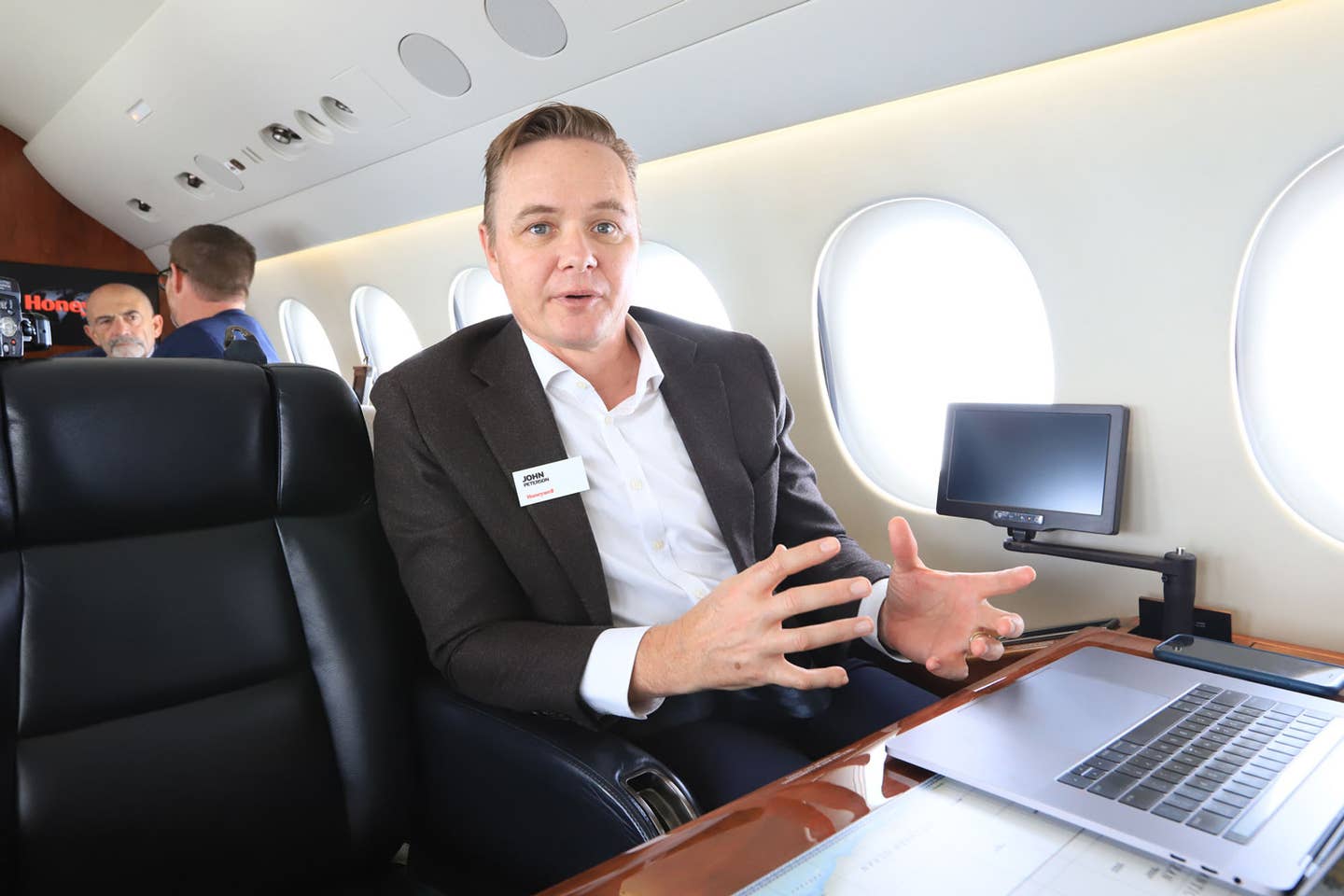
John Peterson of Honeywell explains the JetWave system aboard the company’s Falcon 7X. Dan Pimentel
At FL370 over southern Utah, Honeywell's Dassault Falcon 7X is loaded with six media representatives from NBAA-BACE plus five executives from Honeywell as we "test drive" Honeywell's JetWave in-flight Wi-Fi system. It is an incredible experience to have fully-functional internet connectivity while flying along at 490 miles per hour.
Internet connectivity is just not that complicated to the end user—we just want it to work. And with Honeywell's JetWave system, it works well. On our demonstration flight out of North Las Vegas Airport, the Honeywell connectivity suite worked well, despite being hit with several journalists using all their available devices to test anything they could. However, even with such a demand for data, I was able to use my Macbook Pro laptop and iPhone to access anything I desired online. I accessed Dassault's website and easily watched their promotional video on the 7X in 1080p resolution and full-screen. It was as easy as sitting in the office to check emails, FaceTime and Skype, or access anything I wanted on my browser.
While the end user wants in-flight Wi-Fi connectivity to be uncomplicated and just work when we want/need it, the back-end of the JetWave system is an incredible and mature example of tech engineering.
“Honeywell’s JetWave hardware is the Satcom communication system we provide for high-speed in-flight Wi-Fi data over the Ka-band,” said John Peterson, vice president and general Manager of software and services for Honeywell Connected Enterprise. “The system connects to Inmarsat’s Jet ConneX, the fastest broadband available for business aviation and we have GoDirect as the service provider that actually delivers the data to the aircraft. We provide customers with the ground network, the airtime, cabin network, routers, wireless access points and all the software which includes our innovative portal to allow crews, dispatchers and Flight Department managers to easily configure the system to meet the needs of that particular flight.”
An example of the engineering that went into the JetWave system is the method in which it can be easily configured through the system portal to “shape” the amount of streaming data the system uses. “We have configured our ground network so that we can parse the pipe (available bandwidth) to best meet the mission need,” Peterson explains. “Users can ‘skinny up’ the pipe so that a certain percentage of available bandwidth is allocated to streaming video, because it consumes the most data and can significantly increase the end user’s bill. For instance, a business jet that is under management can be configured for more streaming video data when the owner is flying in it, but the JetWave system can be adjusted by dispatchers through our portal when that aircraft is out for a charter flight. This can keep costs down for owners, many of which have told me their in-flight Wi-Fi bills have gotten so high, they were becoming the number two cost behind their fuel bill.”
While there may be other in-flight Wi-Fi systems on the market, it was obvious from our 1:20 demo flight in Honeywell’s Falcon 7X that their JetWave system is fast, reliable and mature. We traveled about 400 nm southeast of Las Vegas and back, enjoying in-flight internet connectivity as it should be, all while draped in the luxurious comfort of one of the world’s best business aircraft. The back-end of this system supports an end-user passenger experience that is as good as it needs to be, without glitches or trouble.
It just works, and that is really all we need.

Sign-up for newsletters & special offers!
Get the latest FLYING stories & special offers delivered directly to your inbox






